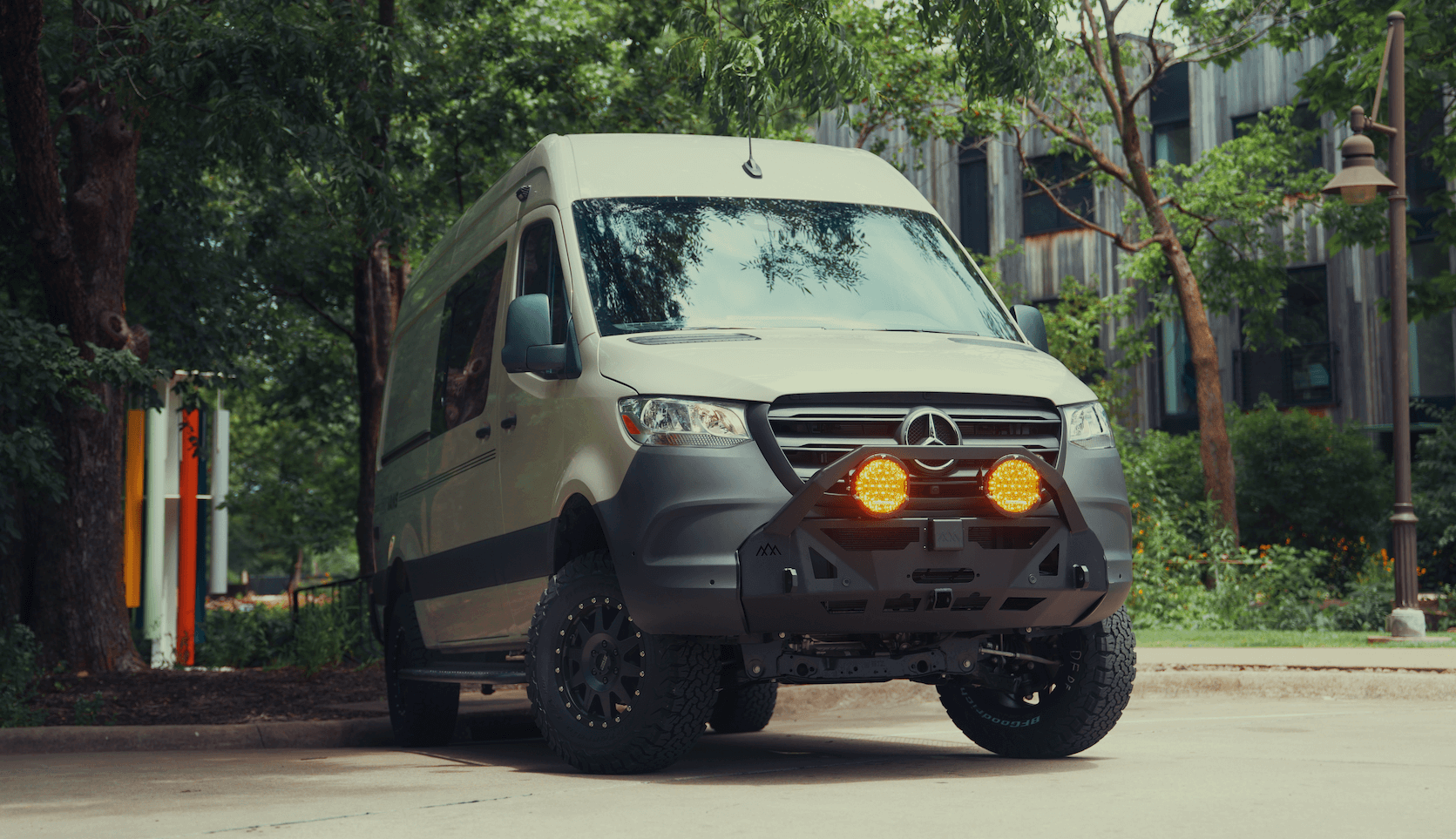Recreational Vans

When winter closes in, a camper van asks more of its tires than a typical car. The extra mass, higher center of gravity, and long wheelbase mean you need real winter tires that carry the Three Peak Mountain Snowflake symbol rather than relying on generic all seasons. That symbol verifies snow traction performance under standardized testing. Deep, siped tread blocks and soft cold resilient compounds deliver grip as temperatures fall. For heavy vans, prioritize a correct load index and a reinforced casing so the tire holds shape under full payload during braking and cornering on cold pavement. Always confirm the size, speed rating, and wheel load limits match your van and the conditions you expect.
All season and all weather tires are different stories. All season tires favor warm weather longevity. All weather designs target mild winters and sometimes carry the snowflake symbol, but dedicated winter tires still lead in ice grip and packed snow braking. If your camper van sees mountain passes, frequent freeze thaw, or shaded rural roads, full winter tires remain the safest choice.
Look for the snowflake mountain icon molded into the sidewall. It certifies acceleration traction on packed snow compared to a reference tire. While not a perfect measure of ice performance, it weeds out summer oriented patterns that harden in the cold. For vans, choose winter patterns with wide circumferential grooves and aggressive lateral channels to clear slush and water, reducing hydroplaning as melted snow refreezes overnight.
Modern studless winter tires use micro silica and dense siping to bite into ice without metal pins. They are quiet, kind to dry pavement, and perform well across a broad temperature range. Studded tires add metal pins for icy roads and remote routes that glaze over, but many regions restrict them and they can increase braking distances on bare pavement. Chains are the emergency ace, especially for steep grades and chain control checkpoints, and should be sized precisely for your tire to protect brake lines, sensors, and bodywork.
A camper van’s curb weight plus gear often puts significant load on each tire. Check the door placard for recommended size and pressure, then verify the load index on your winter tire meets or exceeds that value. If you upsize for ground clearance, keep overall diameter close to stock to protect gearing, speedometer accuracy, and wheel well clearance with chains fitted. Reinforced casings and correct load range keep tread flat on the road which maximizes siping contact on ice.
If you often park overnight where melt turns to ice by dawn, studless tires with high density siping are a strong baseline. In regions that allow studs, they can add bite on polished intersections, but know the tradeoffs in noise and pavement wear. Chains remain essential for posted requirements and steep climbs. Practice installation in a dry driveway, carry gloves and a kneeling pad, and recheck clearance after the first quarter mile.
Cold air reduces pressure, so set tire pressures by measuring in the morning before driving. Follow the placard unless a heavy payload or chain fitment guide calls for a specific adjustment. Rotate winter tires every three to five thousand miles to even out the drive axle scrub common to heavier vans. Fresh alignment keeps the contact patch square, and balanced weight placement inside the van limits rear end slide when descending a slick grade.
Traction control, stability control, and anti lock brakes are allies, but they cannot invent grip. Smooth inputs win. On ice, start in a taller gear if your transmission allows a manual selection, and keep momentum without sudden steering changes. All wheel drive improves launch traction, but braking and turning still depend on the four postcard sized contact patches. That is why correct winter tires are the foundation and the driver’s restraint is the finisher.
If your camper van travels through mixed terrain, consider a balanced plan. Dedicated winter tires for the cold months, an all terrain or highway set for the rest of the year, and chains in the cargo bin for storms. Check local chain laws and stud regulations before trips, and do a quick tread depth gauge check. Above five thirty seconds maintains snow performance, and deeper blocks clear slush faster.
Dialing in winter traction pairs naturally with a thoughtful build. Wheel offset, fender clearance, and suspension geometry can all affect chain fit and snow packed roads. If you are exploring build options or planning a cold weather upgrade path, see our recreational van overview here: Explore recreational vans. Ready for a tailored layout and winter focused spec list, from tires to power and heat management: Custom build your van. Curious about platforms that fit financing and everyday use while still handling winter trips: Browse mainstream vans.
Choose true winter tires with the snowflake symbol, match the load index to your van, and decide on studless, studded, or chains based on the roads you actually drive. Set pressures cold, rotate often, and keep alignment tight. With the right rubber and a calm hand, your camper van stays composed when the temperature drops and the map lines climb.
We build and upfit vans for real travel in real weather. If you want your winter setup planned alongside the rest of your rig, we are ready to help.
Ready to winter proof your rig? Tell us how and where you travel, and our team will spec the right winter setup, from tire choice to clearance, suspension, and chains. Share your build goals and get a tailored plan that keeps your camper van confident when the road turns white.
ADDRESS:
6159 E Huntsville Rd, Fayetteville, AR 72701
PHONE:
(479) 326-9200
EMAIL:
info@ozkvans.com